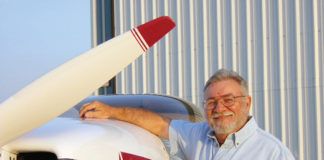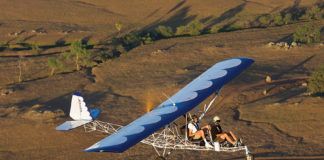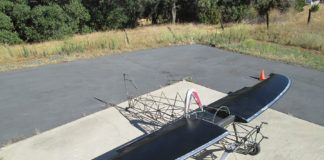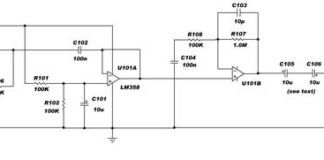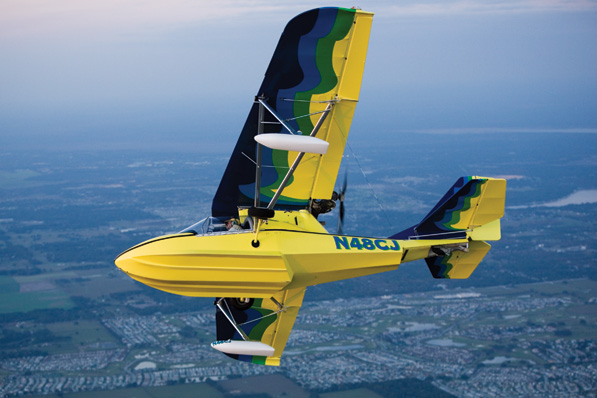
A long time ago-not a real long time ago, but before anyone linked the letters G, P and S together-it seemed that every solo cross-country flight I made involved flying from one side of the sectional chart to the other. Not across the paper but onto the flip side. No plane I could afford to rent had an autopilot, so that meant finding some way to keep flying while unfolding, flipping and re-folding the chart-hardly a single-handed operation. So I learned that I could use the rudder pedals to keep the wings level, and though I didn’t know it at the time, I was exploiting the Cherokee 140s dihedral effect.
When you hear the word dihedral you probably conjure a mental image of an airplane like that Cherokee-or an RV-6 or Pulsar or even the upward-canted outer wing panels of the Thorp T-18-where the wingtips are higher than the wingroots. Youd be right; that is geometric dihedral, and its there to help ensure that the airplane rolls away from any relative wind approaching from the side. Its easy to see how this works if you imagine that Cherokee flying completely sideways. The relative wind approaches the upwind wing from below, raising it. Relative wind approaching a plane from a little left or right of its nose has the same effect, just not as pronounced as in our imaginary flight.
Cause of Effect
Dihedral effect is an airplanes tendency to roll in the presence of sideslip or relative wind from the left or right, and it comes from more than a planes canted wings. If the plane rolls away from the sideslip, the effect is positive and vice versa. If the left wing dropped while I was chart folding, Id apply right pedal, swinging the planes nose right so that the relative wind would approach from the left, which resulted in a right-wing-down rolling tendency. The Cherokees positive dihedral effect allowed me to roll the plane in the same direction as the rudder pedal I displaced. Not the most comfortable or efficient way to roll the airplane, but as a short term expedient, it worked fine.
An airplane with a positive dihedral effect has a welcome self-correcting feature. Lets say your perfectly trimmed airplane becomes victimized by an inconsiderate gust that drops a wing. You’re now in a bank angle with some of the lift acting horizontally in the direction of the low wing. The airplane begins to translate, or slide, toward the low wing, creating a sideslip. Assuming you don’t apply coordinating rudder to eliminate the sideslip, the planes positive dihedral effect rolls the plane away from the sideslip, raising the low wing. Voila. Catastrophe averted. Well leave the consequent dynamic modes of motion explanation for another time.
Try the same scenario in a Cessna 152 with much less geometric dihedral than the Cherokee and, surprise, it still works. A major contributor to the positive dihedral effect in a high-wing airplane is that its a high-wing airplane. Picture the relative wind approaching the plane from the left. As the air nears the left wingroot, its heading into a box corner formed by the wings lower surface and the fuselage. To get around this molecular traffic jam, the air experiences an upwash as it approaches the leading edge of the wing at the wing-fuselage juncture, increasing the local angle of attack, which results in more lift from that wing section than it would generate in balanced, sideslip-free flight. The opposite is occurring simultaneously on the downwind wing. Its easy to visualize the fuselage impeding the air approaching from the upwind side en route to the downwind wing. Relatively higher energy air flowing over the cowl and windshield follows the surface contour, imparting a downwash component to the air immediately ahead of the right wingroot. This means a lower local angle of attack, less lift and a right-wing-down rolling moment.
Perform that same visualization on an imaginary low-wing airplane with no geometric dihedral. The upwind wingroot experiences a slight downwash due to the same box-corner effect, while the downwind wingroot gets the upwash-both of these events tend to roll the airplane toward the sideslip. The dihedral effect of this physical configuration would be negative.
Other Factors
So it makes sense that low-wing airplanes usually have a more pronounced geometric dihedral than high-wing planes to compensate for the lack of inherent dihedral effect from the wing-fuselage interface.
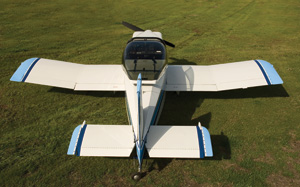
The Thorp T-18 has cranked outer wing panels to give the airplane dihedral effect. From a structures standpoint, it makes some sense to have the center section flat.
The vertical tail also contributes to the airplanes dihedral effect. With most of the vertical tail located above the airplanes center of gravity, any sideward lift it generates tends to roll the airplane. In a left sideslip, the vertical tail generates lift to the right. Because this lift acts above the planes CG, it tries to roll the airplane right-wing-down away from the sideslip-positive dihedral effect. A T-tail configuration is even more effective at rolling the airplane in a sideslip. The high-wing analogy applies here.
Another contributor you wont often see in Part 23 general aviation airplanes is wing sweep. If a swept-wing airplane were flying in a sideslip equal to the wing sweep, the air would approach the upwind wing (the one in the direction of the sideslip) perpendicular to the leading edge. This flow normal to the leading edge would make the wing more efficient, creating more lift and imparting a rolling tendency away from the sideslip toward the downwind wing. The air would approach the leading edge of that downwind wing at twice the wing-sweep angle, resulting in less lifting efficiency and a consequent roll toward the downwind wing. Both of these events indicate a positive dihedral effect.
The upwind wing of any airplane in a sideslip sees cleaner air, while the downwind wing gets the disrupted flow that made its way around the planes nose-another dihedral effect contributor. There are plenty of examples of swept wings in the amateur-built world. Canard airplanes have significantly swept-back wings. While the sweep design may look cool, its purpose is to allow location of the vertical stabilizers and rudders far enough aft to be effective. The designer traded lifting efficiency for physical necessity.
The dihedral effect of some canard designs is so strong that its more powerful than the ailerons under certain flight conditions, as I discovered during a flight several years ago. One of the tests I had planned involved performing bank-to-bank rolls with and without coordinating rudder. Starting from a 30 right-wing-down bank, I applied and maintained full left stick while my feet were off the rudder pedals. The plane began a left roll to about wings level, then reversed to a right roll for 10, then back again to the left, then right and then left before reaching 30 left wing down-all while I was maintaining full left stick.
Because I didn’t coordinate the roll, adverse yaw swung the airplanes nose to the right as it rolled left, creating a left sideslip. The positive dihedral effect generated a stronger rolling moment in the right-wing-down direction than the ailerons could overcome in the left-wing-down direction, causing the plane to reverse direction and roll right. As the airplane rolled right, the left sideslip lessened, possibly even becoming a right sideslip. Now both the ailerons and positive dihedral worked together to roll the plane left-wing-down. This oscillation continued until I abandoned the maneuver. Coordinating rolling maneuvers avoided this seesaw battle between dihedral effect and aileron roll control.
The upside in airplanes such as this one with a strong dihedral effect is that the pilot has the option of generating a faster roll rate by applying more rudder than necessary to coordinate the roll. The downside is that the pilot must pay stricter attention to roll coordination. Picture this plane entering the landing flare in a gusty crosswind. A gust from the side raises the upwind wing due to the dihedral effect. If the pilot merely levels the wing using ailerons, it will initially appear that the problem is solved. However, the process of rolling the plane back to wings-level using only ailerons generates sideslip, which then rolls the airplane back in the direction of the original gust upset. Without proper rudder coordination, this pilot-driven roll/yaw oscillation can quickly become problematic.
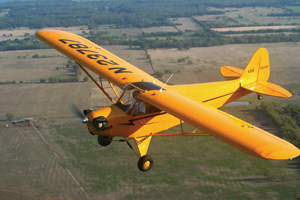
The Regs
Airplanes certificated in the normal or utility category of Part 23 must exhibit a positive dihedral effect. The regulations require a demonstration of positive lateral stability, defined as the tendency to raise the low wing in a sideslip. The test involves establishing a steady heading sideslip such as the forward slip maneuver you might perform to increase your descent rate on final approach. Presumably, youd be holding, say, left stick and right pedal during the slip. If the plane rolls right-wing-down when you release the stick, positive lateral stability is indicated, according to Part 23. There’s an additional practical requirement that the pilot be able to control the planes bank angle even after the loss of its primary lateral control system, which in traditional small airplanes is usually accomplished by exploiting the planes positive dihedral effect.
These regulations don’t apply to amateur-built airplanes, so its incumbent on the pilot to know an airplanes characteristics. Just because an airplane has an obvious positive geometric dihedral, there’s no guarantee it will roll in the presence of sideslip. There are a few examples of amateur-built-and even light sport airplanes-that yaw with rudder deflection but don’t roll unless the ailerons are used. This trait typically shows up during slow flight where the effect is stronger and aileron roll control power is weaker. Airplanes with removable or folding wings where the ailerons can be disconnected and reconnected would certainly benefit from a positive dihedral effect as a Plan B safety feature.
Caution
Speaking of safety, please don’t slam in a boot full of rudder to check your planes dihedral effect while cruising toward that Saturday burger. Exploring your airplanes flight characteristics is a good thing, but be aware that a sudden large rudder deflection-or worse, rudder reversal-could exceed your airplanes structural fin strength, depending on airspeed. Remember, stalling while experiencing a yaw rate is a formula for spinning, so make sure you’re well above stall speed. Some airplanes have a prohibition against sideslip while the flaps are extended or a limit on rudder deflection above a certain airspeed, so check your pilot operating handbook. Finally, do your dihedral dabbling at a safe altitude, always begin with small control inputs, and if the response is not what you expect or makes you uncomfortable, stop and figure out why before going any further.










